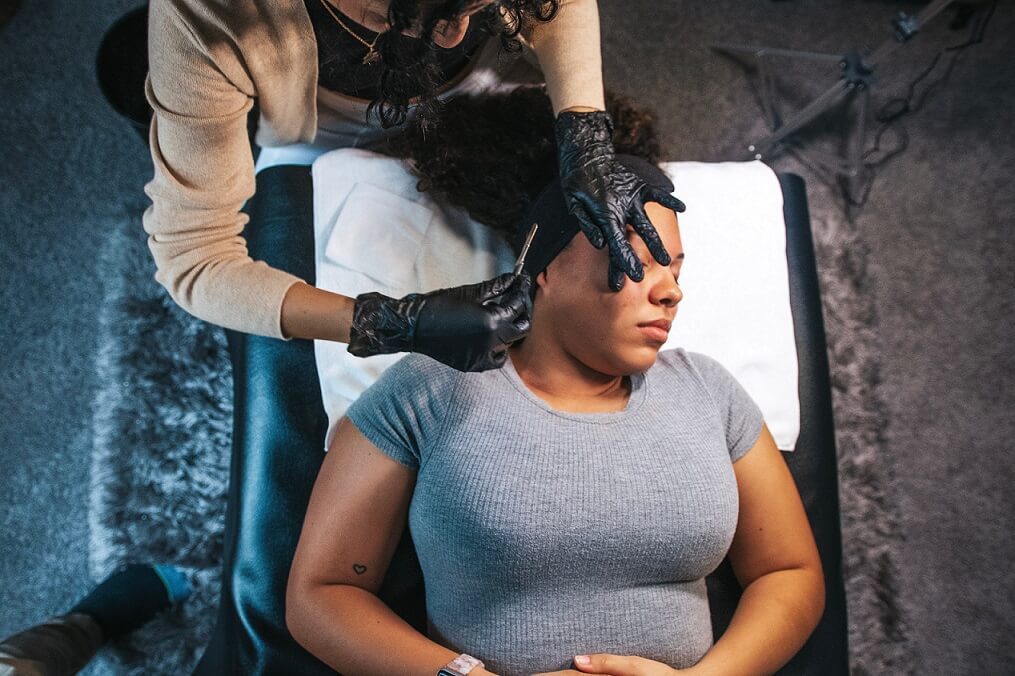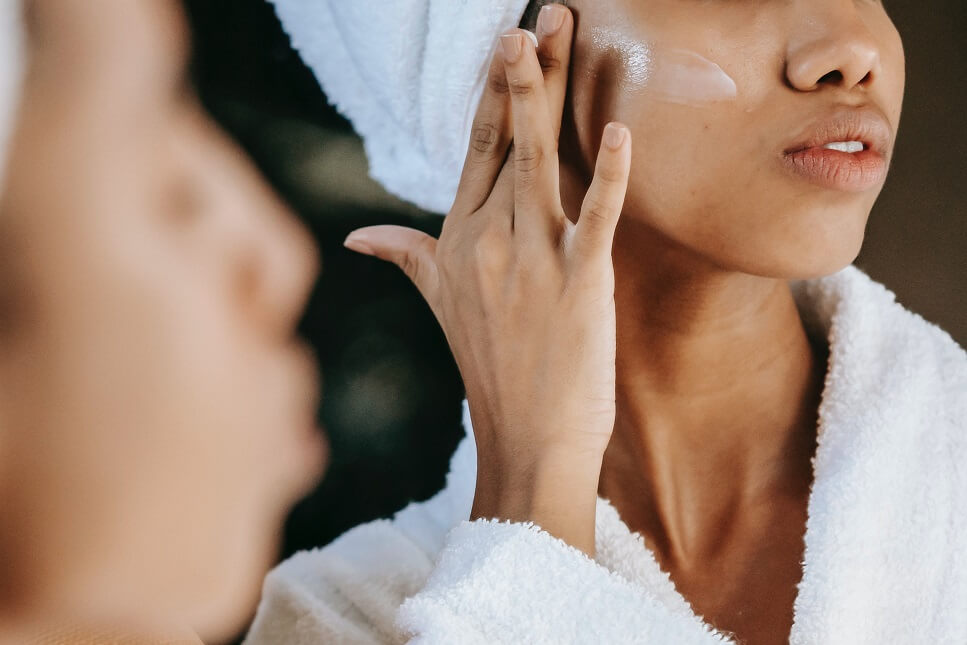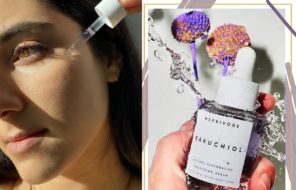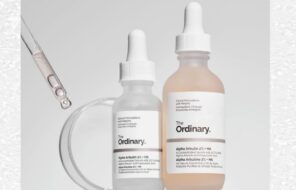Peach fuzz — we all have it, and most of us want to remove it. Formally known as vellus hair, this type of hair is shorter, softer, and usually lighter in color compared to the rest of your body hair. For most of us, it’s not noticeable. For others, the fuzz can be more obvious.
Face shaving isn’t exactly new. Yes, men have been doing it for years. However, women have also historically engaged in the ritual. Even back in the Golden Age of Hollywood, many of the industry’s beloved starlets would shave their faces to achieve a smoother finish. Today, many women shave their faces to make facial hair less conspicuous or to achieve better makeup or skincare results.
Whatever your reason, we’re here to give you the lowdown on what you can expect from face shaving, when you should or shouldn’t do it, and how to do it safely from the comfort of your home.
What is face shaving?
As we mentioned in the introduction, face shaving isn’t a new phenomenon among female users — no matter what Instagrams and TikTok videos would have you believe. The difference is that unlike men, women usually don’t rely on traditional razors and shaving cream since vellus hair is usually too soft to be removed with creams effectively.
However, face shaving can do more than simply remove peach fuzz. It can also work as an exfoliating treatment to remove a layer of dead skin. For this reason, it’s important to know what you’re doing and use the right tools to avoid causing unwanted damage, such as removing too much skin, which can lead to infection.
Just like when you shave your underarms, bikini area, or legs, face shaving is a short-term solution. If you want the results to last, you’ll need to incorporate this into a routine, depending on how quickly your hair grows back.
Benefits of face shaving

Face shaving might not be for everyone, but it’s a popular hair removal solution that you can easily do at home if you want to try it. Some of the top benefits include:
- Exfoliation. Shaving takes off a dead layer of skin, revealing (ideally) healthier skin underneath.
- Smoother makeup application. If you previously felt like your peach fuzz was creating too much texture when you applied foundation, shaving means your makeup glides onto fresh, fuzz-free skin.
- More effective skincare treatments. Because you’re also removing dead skin, skincare products can better penetrate your skin for increased efficacy.
- Gentler than other hair removal options. Compared to waxing, sugaring, or even threading, face shaving can be gentler on your skin — as long as you follow proven methods.
The risks of face shaving
While face shaving can be beneficial, it does come with risks.. While the majority of people who shave their faces rave about it, it’s not a winning solution for everyone. Here are some of the downsides to consider before grabbing that razor:
- Ingrown hairs. Any time you shave any part of your skin, ingrown hairs are always a risk — and your face is no exception.
- Breakouts or infection. Whether you have sensitive skin or frequently fight acne breakouts, this might not be the treatment for you. Routinely raking a bare razor over your skin can do more harm than good by disturbing active acne or removing too much skin and increasing sensitivities.
- Cuts. Just like your legs or underarms, your face is just as susceptible to getting cut by a wayward razor.
- Irritation. If you already have a well-established skincare routine that incorporates regular exfoliating, this is another exfoliating step. For some people, this can be too aggressive, causing irritation.
Is face shaving the same as dermaplaning?

The short answer is, it depends. To an extent, yes, face shaving with a facial razor removes a certain amount of dead skin — which is similar to dermaplaning. However, dermatologists always warn against getting a little too shave-happy, as it’s easy to remove more skin than you safely should.
Excessive face shaving or dermaplaning can cause irritation, scarring, and even infection in more severe cases. If you’re seeking the dramatic “fresh out of the spa results” then dermaplaning is best reserved for licensed aestheticians and dermatologists who are trained with the proper (and very sterile) sharper tools required to engage in this activity safely.
How to shave your face safely
While you shouldn’t get carried away with your face-shaving routine, it’s one skincare habit that many derms agree is generally safe to do at home. However, for the best results, follow a few key guidelines.
Consider your tools
If you’re concerned about cutting yourself, it’s best to choose an electric shaver. These usually feature built-in guards that make it much harder to injure yourself. However, if you’re more seasoned, a traditional single-blade face shaver can also work.
Clean your tools and face every time
Considering that you’re shaving your skin, and there’s always the risk of cuts, you should use sterile your tools (and clean your face) every time. Ideally, placing your shaver with the blade exposed in a UV sterilizer for at least 10 minutes is your best bet.
However, you can also simply wipe the blade with an alcohol pad before use. Likewise, to reduce the risk of spreading dirt and bacteria from one part of your face to another, only shave a freshly washed face.
Open your pores
After washing your face, place a damp warm towel on your face for a minute or two to help open up your pores.
Consider a dry vs. wet shave
Face shaving is one of the few times you can shave over dry skin if you prefer it. However, if you’re concerned about friction, then opting for oil can be a good idea. Just ensure it’s an oil you’ve used before to ensure it won’t irritate your skin.
Shave the right way
Just like with your legs or underarms, there’s a right and wrong way to shave. For optimal results, the skin needs to be held taut. This prevents unnecessary friction and reduces the risk of nicks and cuts. Work from top to bottom from your upper hairline down towards your jaw — avoiding any areas that are actively irritated such as acne. Likewise, don’t apply too much pressure, as being too aggressive can increase your chances of cutting yourself.
Don’t skip the aftercare

Considering that you’ve just removed a layer of skin, you need to replenish lost moisture. Use a gentle moisturizer after you’ve finished shaving. Additionally, for the next day avoid using any aggressive skincare serums (think retinol or even bakuchiol), and skip the makeup so that your skin has a little time to heal. Be sure to apply SPF if you’re heading outdoors.
Smoother skin is easier than you think
Face shaving might not be a solution for everyone, but it’s a longstanding beauty routine that’s enjoying a resurgence, thanks to social media. If you do decide to shave your face, always be sure to work gently and use clean tools to reduce the risk of cutting yourself or encouraging an infection.





